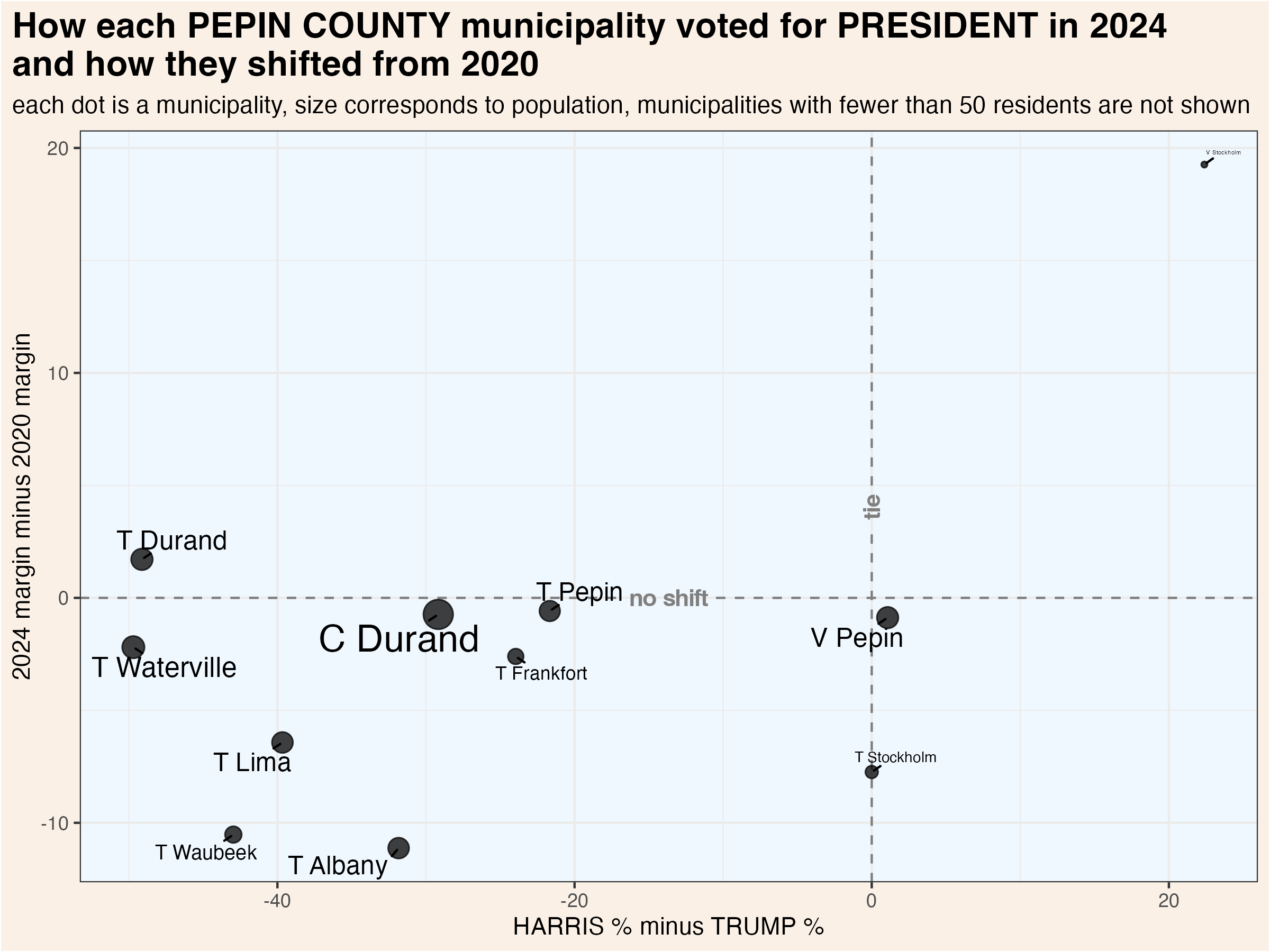
49 Pepin
Pepin (pop. 7,400) is a small, irregularly-shaped county in west central Wisconsin, along the border with Minnesota. It is perhaps best known as the location of the Little House in the Big Woods (the first book written by Laura Ingalls Wilder). Pepin’s population is 95% white, slightly older than the state average, and with a median income typical for the state. College degrees are less common here than in the state as a whole. The county leaned Democratic during the 2000s, then flipped to Republican leaning around 2010.
49.1 Demographics

49.2 County Election Results

Click each column name to sort its values.
49.3 Municipality Election Results
All municipalities in Pepin County are quite small. The largest, Durand city, has a population of about 1,700. The smallest is the Village of Stockholm with a population of about 100. Stockholm village is also the most Democratic-leaning municipality, followed by the Village of Pepin and the Town of Stockholm. The most Republican-leaning communities include the towns of Waterville, Waubeek, and Durand.
This map shows the location of each municipality in the county, as it existed in 2022.

These dot plots show the most recent election results in each municipality.



To more clearly illustrate recent changes in municipality voting trends, these scatterplots compare the most recent vote for president and senator with the shift from that office’s previous election.


These maps show show every election result since 2000 in each municipality.



Click each column name to sort its values.
49.4 Supreme Court Election Results
Wisconsin’s Supreme Court has 7 justices, each of whom are elected to 10 year terms in statewide elections held in April. State law prohibits more than one Supreme Court election from being held in a single year. If a seat becomes vacant, the governor appoints a replacement who serves until the next year in which no court election is already scheduled. If more than two candidates achieve ballot access, a nonpartisan, top-two primary is held in February.
Court elections are formally nonpartisan, but candidates are usually supported by either liberals or conservatives. In recent years, it has become common for the Democratic and Republican parties to endorse and actively campaign on behalf of favored judicial candidates. The liberal and conservative labels indicated in the following graphs and tables are based on widely recognized tendencies, not any formal affiliation.
49.4.1 County Election Results
This graphic compares how presidential, gubernatorial, and court elections have trended over the past quarter century. Click the “Table” tab to see detailed results for the Supreme Court races.

49.4.2 Municipality Election Results
The following table shows the results of each Supreme Court election by municipality. The graphic visualizes the shifts over the past three court elections.
